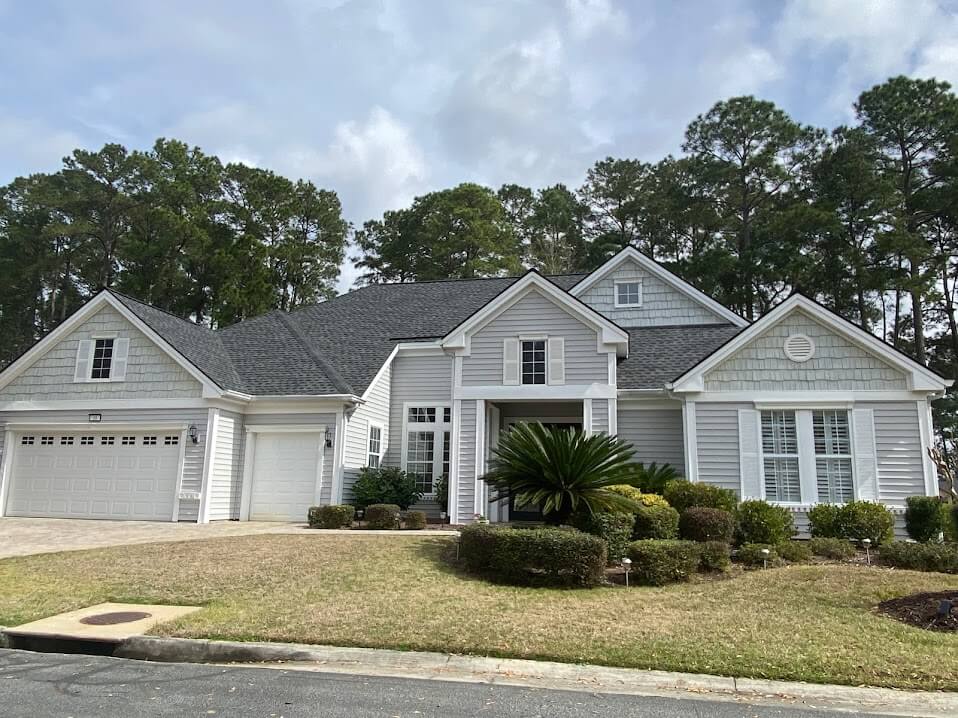
Did you know that the color of your roof can play a big part in how hot or cool your home gets? Dark roofs, like those deep black or dark gray ones, can soak up lots of sunlight and become really warm. Just like wearing a dark shirt on a sunny day can make you feel hot, these roofs can make your house warmer inside, especially if you live in a place with lots of sun.
But wait, there's more! Lighter roofs, such as white or light gray ones, do something completely different. They reflect more sunlight and don't absorb as much heat. It's like wearing a light-colored shirt on a sunny day – it helps keep things cooler. These roofs don't trap as much heat, so your house stays more comfortable without needing as much help from air conditioning. Here at RoofCrafters, we've installed roofs of every shade for nearly thirty years, and we know there's truth to the home color and energy efficiency theory.
In this article, we'll explore how the color of your roof can affect how much energy you use to keep your home cozy. We'll learn how different roof colors can significantly save energy and keep your house comfortable. So, let's uncover the secrets behind roof colors and how they impact your home's energy efficiency!
Does the Color of Your Roof Affect Your Home's Energy Efficiency?
The color of your roof can affect how much heat gets into your home, which can impact energy use. As mentioned, dark-colored roofs, like black or dark gray, soak up more sunlight and can get really hot, just like how dark clothes feel warmer in the sun. This extra heat makes the inside of your house warmer, especially in sunny places.
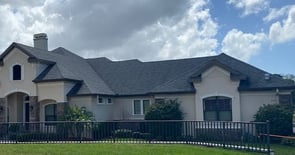
On the other hand, lighter-colored roofs, such as white or light gray, reflect more sunlight and don't absorb as much heat. Just like wearing a light-colored shirt on a hot day, these roofs keep things cooler inside the house. They don't trap as much heat, so your air conditioner doesn't have to work as hard to keep the inside temperature comfortable.
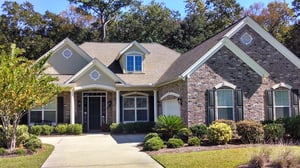
When your house stays cooler, especially during hot summer months, it can reduce the need for air conditioning, saving energy and lowering electricity bills. This can also help the environment by reducing the amount of electricity you use, which lowers greenhouse gas emissions associated with power production.
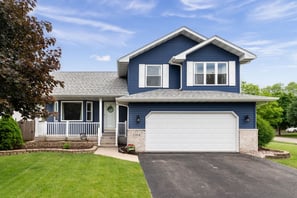
So, choosing a lighter-colored roof might be a good idea if you live in a place with lots of hot sunny days. It can help keep your home cooler, save energy, and make your house more comfortable, all while being kinder to the environment.
Do White Roofs Combat Climate Change?
Yes, white roofs can be better for climate change in some ways! They reflect more sunlight back into space instead of absorbing it, which helps to keep buildings and cities from getting too hot. When cities get really hot, especially in the summer, it's called the "urban heat island effect." Dark surfaces like roads and roofs absorb a lot of heat from the sun, making cities warmer than the surrounding areas. White roofs can help reduce this effect by reflecting sunlight and keeping things chilled.
.jpg?width=301&height=202&name=ryan-parker-mqpawAQXRyA-unsplash%20(1).jpg)
When cities are cooler, people don't need to use as much air conditioning to stay comfortable, which means less electricity is used. Using less electricity lowers the demand for power, and power plants produce fewer greenhouse gasses like carbon dioxide when making electricity. These gasses contribute to climate change by trapping heat in the atmosphere.
Additionally, white roofs can help reduce the need for energy-intensive cooling systems, especially during hot summer months. By keeping buildings cooler naturally, they decrease the amount of energy required to cool homes and offices, which further reduces the carbon footprint associated with energy consumption.
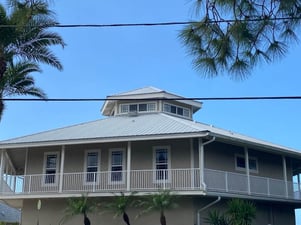
However, it's essential to consider that the impact of white roofs on climate change might vary depending on different factors, such as location, climate, and building design. While they can be beneficial in many situations, other factors, like the materials used for the roof and the overall building's energy efficiency, also play a role in addressing climate change.
So overall, white roofs can contribute positively to mitigating climate change by reducing urban heat, lowering energy consumption for cooling, and decreasing greenhouse gas emissions associated with energy use.
Is Your Roof Color Helping You Save Energy?
The color of your roof matters more than you might think! Whether it's dark or light, the color can influence how much heat your home soaks up from the sun. Dark roofs, like black or dark gray, absorb more heat, making your house warmer inside. On the other hand, light roofs, such as white or light gray, reflect more sunlight and keep things cooler indoors.
But it's not just about color; it's about making choices that suit where you live and how you want to use energy. By understanding how roof color affects energy efficiency, you're better equipped to make smart decisions about your home. So, whether you're considering a new roof or thinking about ways to make your home more energy-efficient, remember the impact that roof color can have.
If you live in one of our service areas, help isn't far away! When you're ready, visit our contact page to connect with one of our friendly RoofCrafters representatives. We're excited to begin your roofing project!
My name is Kevin Mills, and I am the lead estimator for RoofCrafters’ Tampa division. I’m originally from Michigan, and I enjoy hunting, fishing, and spending any free time outdoors. What I’m most passionate about, though, is helping business owners and homeowners alike achieve their roofing goals, all while providing a seamless customer journey.




